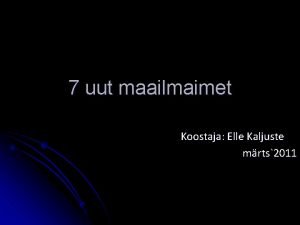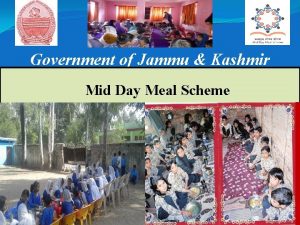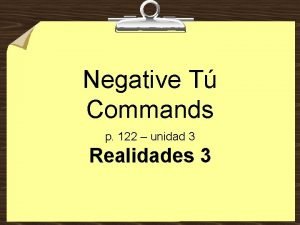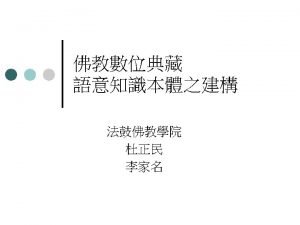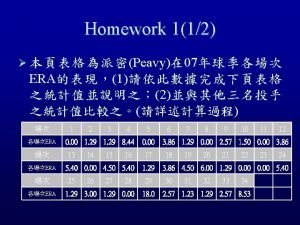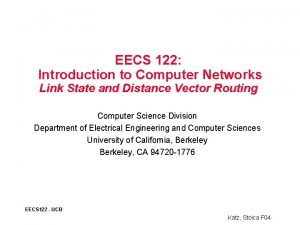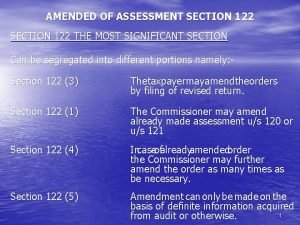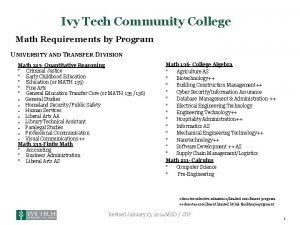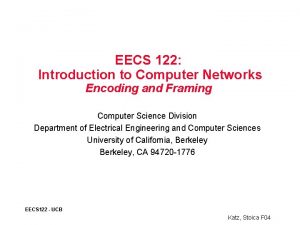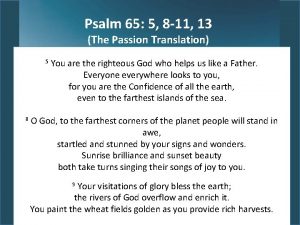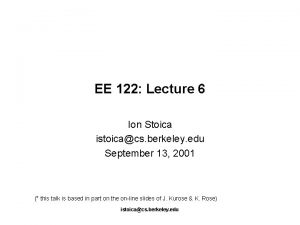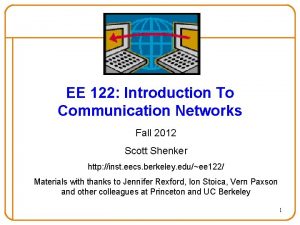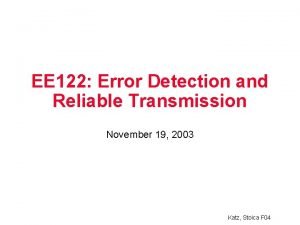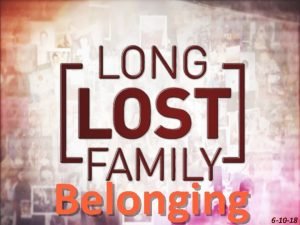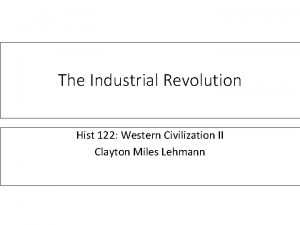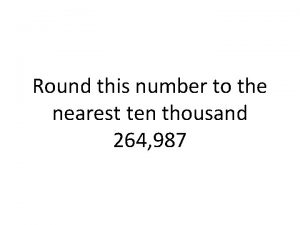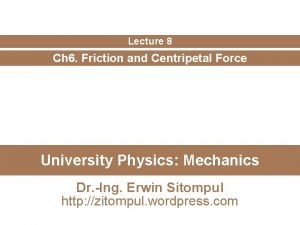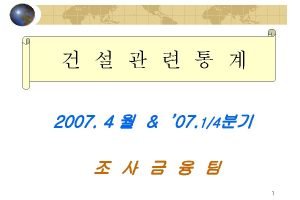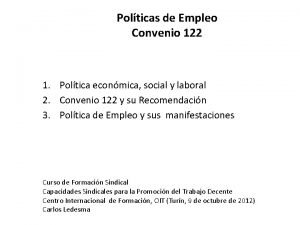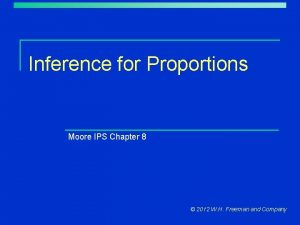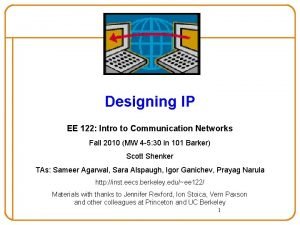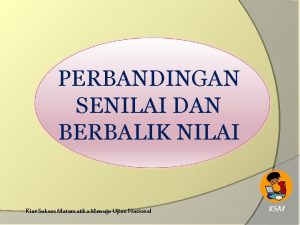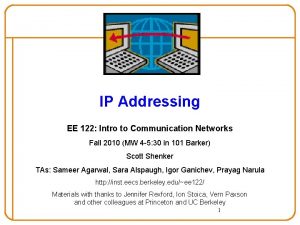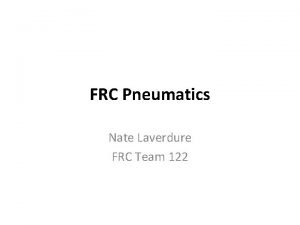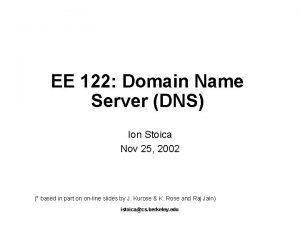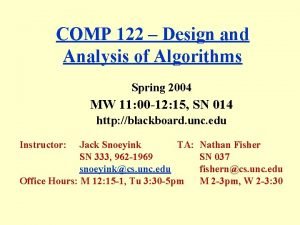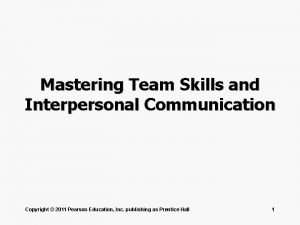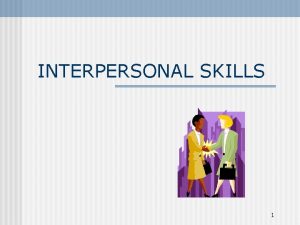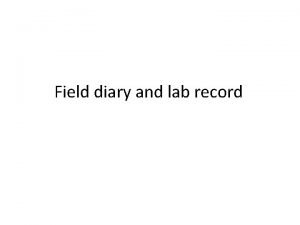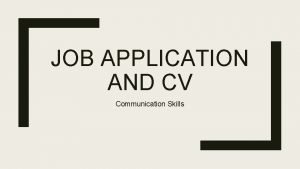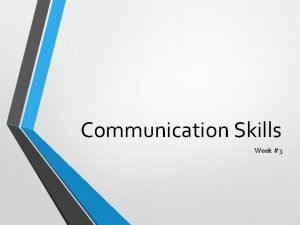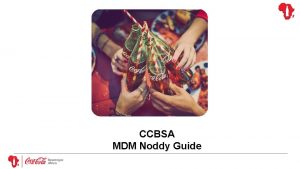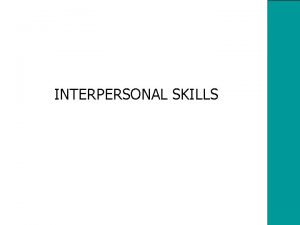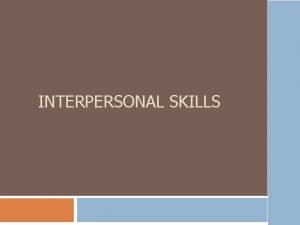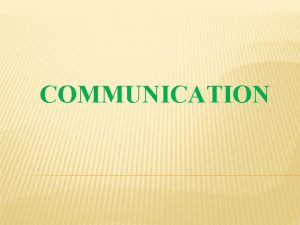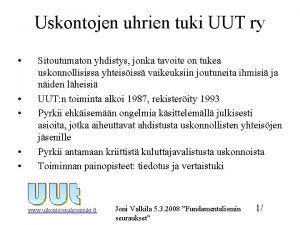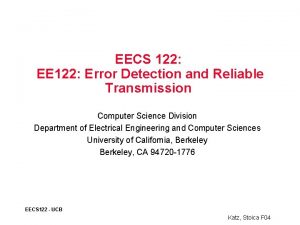UUT 122 SKILLS AND TECHNOLOGY IN COMMUNICATION MDM
















































- Slides: 48

UUT 122 SKILLS AND TECHNOLOGY IN COMMUNICATION MDM FAUZIAH BT ISMAIL School of Human Development & Technocommunication (i. KOM)

TOPIC 2. 0 SMALL GROUP COMMUNICATION

After this lecture students should be able to: 1. Define small group communication 2. Explain the characteristics of small group 3. Explain group members role in group talk

The Outlines Definition Directly observable characteristics ◦ ◦ Communication Space Time Size Indirectly observable characteristics ◦ ◦ ◦ Interdependence Norms Structural patterns Goals Perceptions

DEFINITION … a few people engaged in communication interaction over time usually in face-to-face settings, who have common goals and norms and have developed a communication pattern for meeting their goals in an interdependent manners (Cragan and Wright, 1999).

DIRECTLY OBSERVABLE CHARACTERISTICS OF A SMALL GROUP 1. COMMUNICATION 2. SPACE 3. TIME 4. SIZE

Communication

1. COMMUNICATION For real group communication to occur, there must be more then turn-taking communication. True group communication is not random, but purposeful communication interaction such as problem-solving, team-building, and trust-building.

1. COMMUNICATION The purposeful communication interaction is central to a definition of a small group and can be determined through: q The frequency of the communication interaction. q The distribution of communication interaction among participants. q The content of the communication interaction.

Space

2. SPACE Space refers to the location of interaction Face-to-face communication must occur for a collection of people to become a small group. But, the emergence of new technologies has changed this definition; teleconferencing regularly occurs in business life and group members in different places.

Time

3. TIME A collection of people have to communicate with one another for some period of time before they become a group > Why? However, it might take less then a minute for a group to form and function as a team. In contrast, the student work group you are assigned to in class may have to meet several times before it starts to become organized.

3. TIME � Nowadays, new technology is affecting concept of a groups’ time. � Computer-assisted work groups can share and store electronic files so that group members can work on the same problem at different times. � Thus, through the use of interactive computers, people who work on different shifts in a company could become an effective problem-solving group without even meeting face-to-face at the same time.

Size

4. SIZE � Three (3) is the minimum and the upper limit of a small group is thirteen (13)- twenty (20) � When a group become much larger, it tends to subdivide and form cliques. � There are two reasons why five (5) to seven (7) is the ideal size for a work group: q There is a series of roles that need to be played for a group to do good work. q You need to have a number of people in your group to ensure that there is enough diversity of opinion and knowledge of the task.

4. SIZE � Nevertheless, three heads are better then one or two – but not better than six; the discussions going to be more lively among six persons.

INDIRECTLY OBSERVABLE CHARACTERISTICS OF SMALL GROUP COMMUNICATION 1. INTERDEPENDENCE 2. NORMS 3. STRUCTURAL PATTERNS 4. GOALS 5. PERCEPTIONS

Interdependence

1. INTERDEPENDENCE � Mutually supporting must be presented for small groups to exist and is widely accepted by scholars. � Achievement of a common goal through mutual support is necessary for a task group to exist.

Norms

2. NORMS Group norms are shared value, beliefs, behaviors and procedures regarding the group’s purpose. The more the group’s norms are clearly noticeable to people outside the group, the more likely the group is organized.

2. NORMS � Norms occurs in three areas of group life: q. Social : do’s and don'ts q. Procedural: do’s and don'ts q. Task: do’s and don'ts

DO’s - Social Serve refreshment Dress casually Use first names Avoid controversial subjects Tell humorous jokes Et cetera DON’Ts - Swear - Arrive late - Be absent without any solid reason(s) - Tell sexist, racist, ethnic, ageist, or religious jokes - Et cetera

Procedural Do’s - Introduce people - Plan to participate Establish goals Build an agenda Hold a routine meeting one hour in length - Have someone in charge - Sit face to face - Et cetera Don’ts - Leave the meeting without solid excuse(s) - Monopolize conversation - Stand up and speak in the meeting - Demand to lead - Refuse to speak when addressed - Et cetera

Do’s - Criticize ideas, not Task people - Support the best idea - Commit yourself to group solutions - Share in the workload - Speak up if you disagree - Ask questions about group ideas - Et cetera Don’ts - Push your idea on the group - Support ideas just because of people who presented them - Be verbally violent if you disagree with ideas - Consider your ideas as the only ones of merit - Et cetera

3. STRUCTURAL PATTERNS There are four distinct types of group talk that constitute all the essential communication that you need to comprehend to be an affective small group member.

1. Problem solving talk 2. Role talk (5 major roles +5 secondary roles) 3. Consciousness raising talk 4. Encounter talk

1)Problem-solving talk q Is a talk that a group must go through to solve a problem.

PROBLEM-SOLVING GROUP PATTERNS Specific Decision. Making Discussion Formats Techniques Problem-Solving Agenda Systems Roundtable discussions Nominal group discussion Dewey’s reflective thinking: Mc. Burney & Hance Symposium Delphi technique Ross four-step agenda Panel Discussion Brainstorming Wright ten-step agenda Forum types Buzz groups Brilhart-Jochem ideation criteria Colloquy Single question Ideal solution Functional approach Parliamentary procedure PERT (Program Evaluation and Review Technique) Focus groups Cyborg problem-solving system

3. STRUCTURAL PATTERNS � 2) Role-talk q Role that played by group members to discuss problems effectively q Role that normally played by group members are (5 major roles, and 5 secondary roles):

Role talk � 1) Task leader � 2) Social-emotional leader � 3) Tension releaser � 4) Information provider � 5) Central negative � 6) Questioner � 7) Silent observer � 8) Active listener � 9) Recorder � 10) Self- centered follower

Task leader Is the person who responsible for the group members and the work the group does and the group productivity. He/she initiates the generation of ideas or solutions, ask for or block critics, follow procedures, offering writs (penjelasan) etc.

Social-emotional leader � Social-emotional leader may actively support the task leader in a complementary lieutenant role. � He/she handle interpersonal problems and able to empathize with other people � He/she group. concentrates on the “climate” of the � He/she constantly on guard for any interpersonal damage that might take place in solving the task. � He/she responsible for the group’s well-being and individual members’ satisfaction.

Tension releaser Tension releaser is the group member(s) who is/are able to tell jokes that can be accepted by all group members. He/she provides humor to break tension. He/she able to resolve interpersonal conflict with well-timed humor.

Information provider The role of information provider is to provide accurate and concise data instantly for all major aspects of the discussion topic. IP has research skills and expert knowledge of the discussion topic. He/she contributes ideas and critically evaluates ideas that are not soundly based in the research data.

Central negative � The person who is constantly challenging the leader in the task and procedural areas. � The person tends to have the same abilities as the task leader and in fact continually challenges him or her for the leadership of the group. � The three leadership functions that a central negative most frequently attempts to perform are evaluating ideas, making agendas, and instigating (memulakan) conflict. � The central negative force the group to rethink its position carefully and makes the task leader accurately aware of his or her responsibilities in terms of group productivity.

Questioner � Two task functions that the questioners performs are seeking ideas and seeking ideas evaluation. � The procedural function the questioner most often performs is clarification. � Normally, he/she able to probe the idea under discussion incisively (tajam) without threatening or alienating group members and without challenging the task leader.

Silent observer � People who play this role quietly observe and evaluate the discussion being carried on by more active members. � However, it is their non-verbal approval or disapproval that ultimately resolves the debate. � Before the formation of their opinion, people who play the role of silent observer appear pleasant but evasive (bersifat mengelak) when asked for their opinion.

Active listener � All members of the group should feel an obligation to listen attentively and encourage other members to explain their positions. � The person who plays this role remains argumentatively neutral, while at the same time being actively supportive of any member who attempts to contribute an idea or evaluate an idea under consideration. �A group member occasionally will specialize in the role of active listener by assisting in the performance of two leadership skills: summarizing and verbalizing consensus.

Recorder Normally a group member is designated as the official recorder of a meeting. For good, most work groups rotate the role around the group. In normal organizations, a non-member of the group who has been specially trained in recording is brought in to do the recording.

Self-centered follower The role of self-centered follower works against the group’s best interest. If this role is played by too many group members, the group will surely fail. The person who plays a self-centered role is using the group for his/her own ends.

3. STRUCTURAL PATTERNS � 3. Consciousness raising talk. q Chesebro, Cragan, and Mc. Cullough defined consciousness raising as “…a personal, face-toface interaction which appears to create new psychological orientations for those involved in the process” (Cragan and Wright, 1999: 42). q This talk essentially group motivational talk which produces group identification and pride. q The use of formal and informal CR is to build spirit in work groups.

3. STRUCTURAL PATTERNS � 4. Encounter talk. q Encounter talk is interpersonal talk. q It deals with personal disclosures of group members that allows the members to develop trust and empathy toward one another.

4. GOALS � Small groups are held together by their need to cooperate in the achievement of a group goal. � The goal is the ‘glue’ that make the group members cohesive. � Cohesiveness focuses on commitment to work collectively toward group goals.

4. GOALS � Cohesion increases as communication interaction facilitates role taking and as the group stabilizes it’s norms. �A group will not become a group unless it has a common goal that is sufficiently attractive to the membership that they will set aside their personal aims for the sake of group goal achievement.

5. PERCEPTIONS The final way to tell if a small group from a collection of people is to see whethere is a perceived boundary line that separates the insiders from the outsiders. An individual must come to believe that he/ she is a member of a new identity or the individual’s productivity and membership satisfaction will suffer. If the we-ness does not occur for most members, the group will not exist.

Main Reference Cragan and Wright. (1999). Communication in Small Groups: Theory, Process, Skills. Belmont, CA: Wadsworth Publishing Company. THANK YOU
 7 uut maailmaimet
7 uut maailmaimet 7 uut maailmaimet
7 uut maailmaimet How to improve intrapersonal skills
How to improve intrapersonal skills What is a soft skill
What is a soft skill Mid day meal jammu and kashmir
Mid day meal jammu and kashmir Mandatos negativos con tú (p 122)
Mandatos negativos con tú (p 122) Nec 250-94
Nec 250-94 Hyponomy
Hyponomy Homework 122
Homework 122 Eecs 122
Eecs 122 Ece 122
Ece 122 Notice to amend assessment
Notice to amend assessment Math 135 ivy tech
Math 135 ivy tech Eecs 122
Eecs 122 Nec 250 122
Nec 250 122 Psalm 122 passion translation
Psalm 122 passion translation Tehillim 122
Tehillim 122 Ee 122 berkeley
Ee 122 berkeley Ee 122
Ee 122 Ee 122
Ee 122 Class f advisory airspace
Class f advisory airspace Psalm 122 tpt
Psalm 122 tpt Abseetism
Abseetism François quesnay
François quesnay Round 638 to the nearest ten
Round 638 to the nearest ten Psalm 22:6-8
Psalm 22:6-8 Nrs 122
Nrs 122 A traffic light weighing 122 n hangs from a cable
A traffic light weighing 122 n hangs from a cable 건설업 gdp 비중
건설업 gdp 비중 Escritura en tercera persona ejemplo
Escritura en tercera persona ejemplo Convenio 122 oit
Convenio 122 oit You buy a package of 122 smarties
You buy a package of 122 smarties Ece 122
Ece 122 Ee 122
Ee 122 Horas extras nocturnas lottt
Horas extras nocturnas lottt Psalm 122:1-9
Psalm 122:1-9 Makanan yang disediakan pengusaha ternak selama
Makanan yang disediakan pengusaha ternak selama In ip addressing, an address beginning with 122 is
In ip addressing, an address beginning with 122 is Frc pneumatics diagram
Frc pneumatics diagram Ee dns servers
Ee dns servers Comp122
Comp122 Essential skills ontario
Essential skills ontario Unit 1 communication and employability skills for it
Unit 1 communication and employability skills for it Mastering team skills and interpersonal communication
Mastering team skills and interpersonal communication Pengertian interpersonal skill
Pengertian interpersonal skill Importance of field diary
Importance of field diary Explain the personal attributes valued by employers
Explain the personal attributes valued by employers Job application communication skills resume
Job application communication skills resume Employability skills unit 1
Employability skills unit 1

